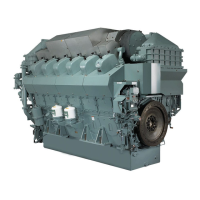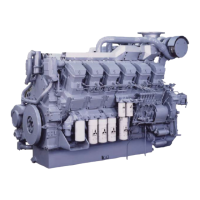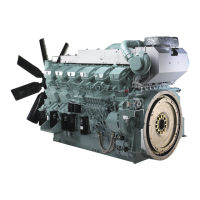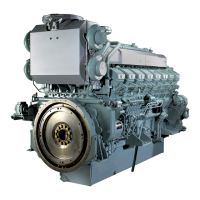4 FUEL
Mitsubishi Diesel Engine S12R OPERATION & MAINTENANCE MANUAL
105
Pub. No. 291Y1-40720 Revision: 5
Fuel - Handling
• Devices and equipment outside the
scope of our supply are included in the
facility. For the details, refer to such a
document as the specifications sheet
prepared by the generator supplier.
• For the devices and equipment outside
the scope of our supply, refer the
corresponding manual of the generator
and the supplier's operation manual.
Refill the fuel tank or a day tank up to the upper limit
of the specified quantity at the end of each
operation.
• By refilling up to the upper limit of the
specified quantity, entering of water
into the tank can be avoided. In
addition, in case that dust or water
entered into the tank, a time for
separation and precipitation can be
given.
Fuel - Refill
• Before removing the cap of a drum can or the
tank, clean its surrounding thoroughly. Also clean
your hands and hoses.
• When pumping up fuel using a hand-operated
pump, be careful not to pump water or sediment
accumulated at the bottom of the storage tank.
• When filling the fuel tank, be sure to use a
strainer so that foreign particles will not enter.
Do not discard waste oil into
sewerage, river, lake, or other similar
places.
* Be sure to discard waste oil in accordance with
the applicable laws and regulations.
Do not store fuel in a poorly ventilated
place.
* Otherwise, built-up volatile fuel may be exposed
to a flame, which causes an explosion or a fire.
Before handling fuel, remove static
electricity.
* Otherwise, the fuel may be ignited.
* Ground the fuel tank.
When working with fuel, wear suitable
protective gears such as protective
mask, protective eyeglasses, rubber
gloves, working clothes with long
sleeves and long trousers.
* If fuel comes into contact with your eyes, mouth,
or skin, it may irritation or disorders.
Do not breathe in volatile fuel.
* Otherwise, it may be hazardous to your health.
When storing fuel in the container,
close its cap tightly.
* Otherwise, built-up volatile fuel may be exposed
to a flame, which causes an explosion or a fire.
Be sure to drain water from fuel, and
pay attention that coolant or other
water will not get mixed with fuel.
* Otherwise, rust formed on the plunger may
cause failure of engine stopping, flue explosion,
dilution, or water hammering.
Do not remove the strainer while
filling the fuel tank.
* Otherwise, entry of foreign particles may cause
damage to the fuel pump.
When using fuel from a storage tank,
leave it to sit for more than 24 hours
so that dust and water can settle at
the bottom. Then, use the upper clean
fuel.
* Otherwise, clogging of the filter may cause
decrease in the output power.
* Depending on the specification of the tank,
prolonged sedimentation time may be required.

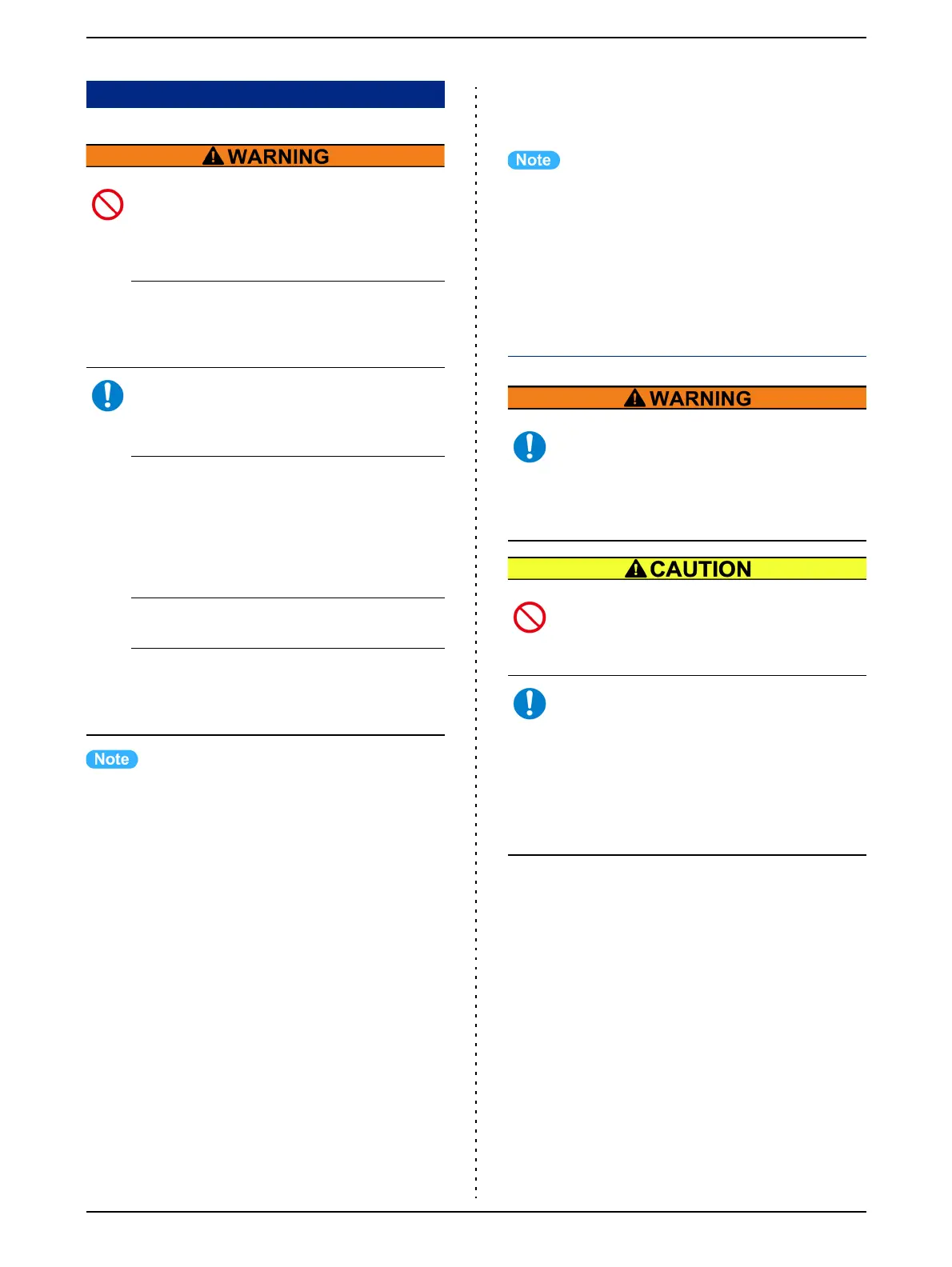